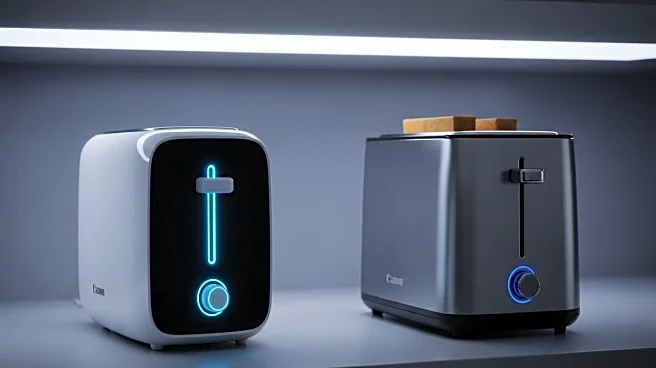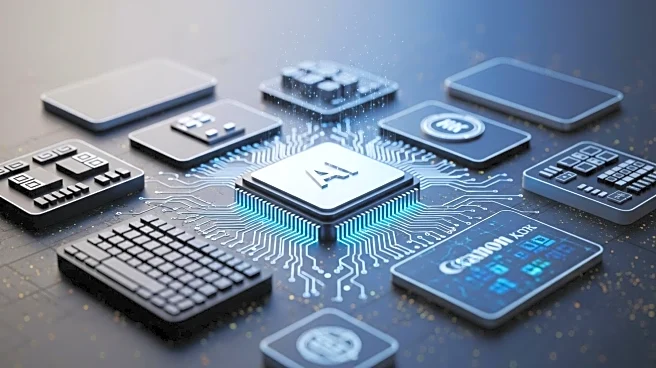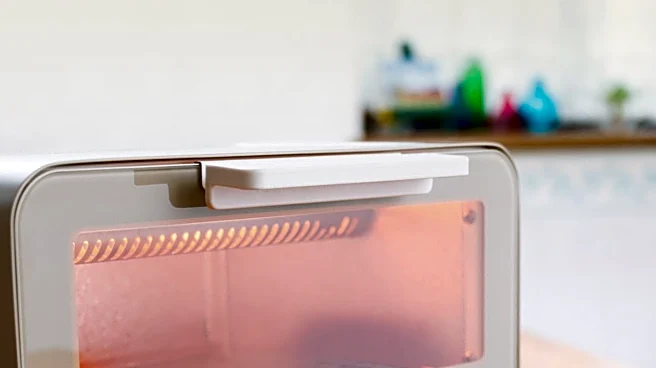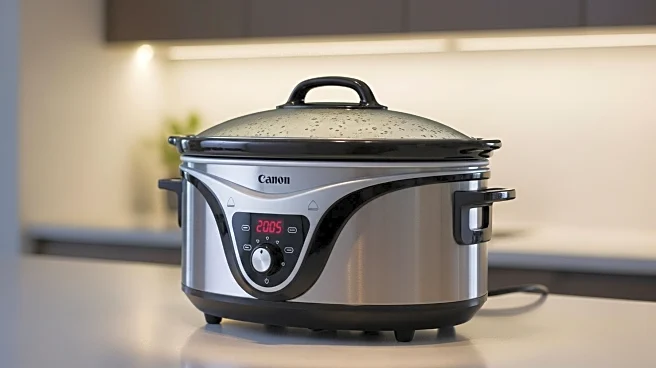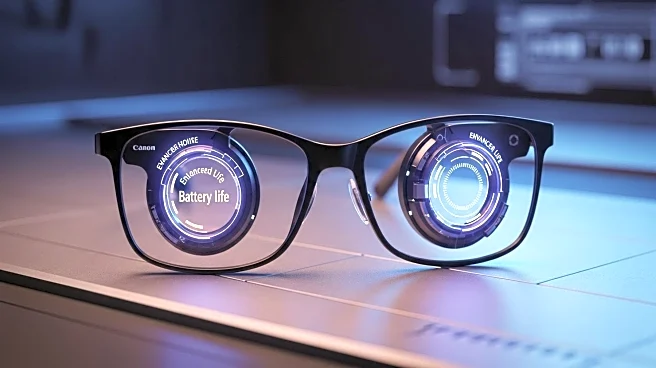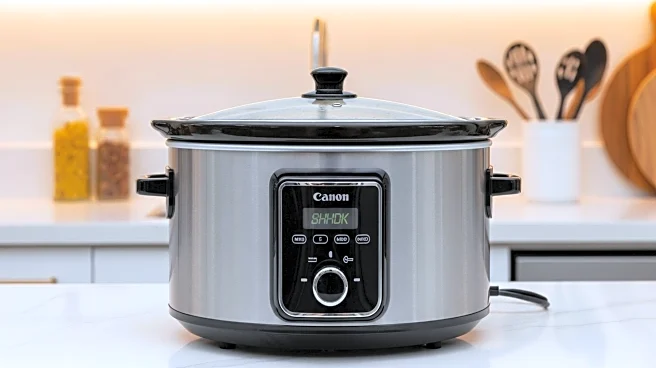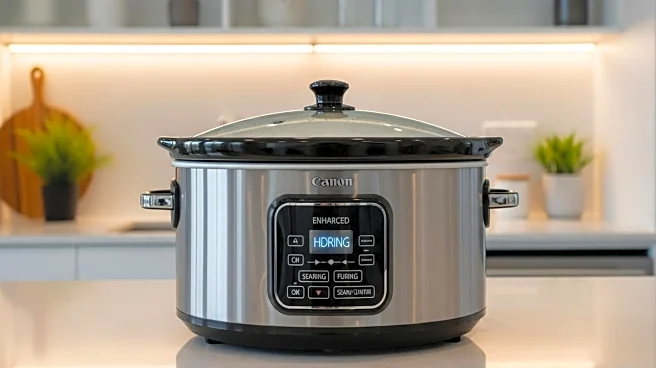What is the story about?
What's Happening?
A recent comparison between two smart toasters, the Revolution R180 Connect Plus and the Kalorik Vivid Touch Toaster, highlights advancements in kitchen technology. The Revolution toaster, priced at $400, offers features such as Wi-Fi connectivity, a photo screensaver, and multiple toasting options. In contrast, the Kalorik toaster, priced at $120, provides a more traditional design with a manual lever and fewer features. Both toasters were tested for their performance in toasting various types of bread, including white, multi-grain, brioche, and frozen bagels. The Revolution toaster demonstrated quicker toasting times and more consistent results, while the Kalorik toaster showed variability in achieving the desired brownness levels. Despite the price difference, both toasters offer unique features that cater to different consumer preferences.
Why It's Important?
The emergence of smart kitchen appliances like these toasters reflects a growing trend towards integrating technology into everyday household items. This shift has implications for consumer behavior, as individuals may prioritize convenience and advanced features over traditional designs. The Revolution toaster, with its higher price point, targets consumers seeking luxury and multifunctionality, while the Kalorik toaster appeals to those looking for affordability without sacrificing basic smart features. This trend could influence the kitchen appliance market, encouraging manufacturers to innovate and offer diverse options to meet varying consumer needs. As technology continues to evolve, smart appliances may become more prevalent, potentially reshaping the way people interact with their kitchens.
What's Next?
The smart toaster market may see further developments as manufacturers strive to balance cost and functionality. Future iterations could include enhanced connectivity features, improved energy efficiency, and expanded customization options. Consumer feedback will likely play a crucial role in shaping these advancements, as companies aim to address user preferences and pain points. Additionally, the integration of smart technology into other kitchen appliances could lead to a more interconnected kitchen ecosystem, offering seamless control and monitoring capabilities. As smart technology becomes more accessible, it may drive broader adoption across various household items, influencing consumer expectations and purchasing decisions.
Beyond the Headlines
The rise of smart kitchen appliances raises questions about privacy and data security, as devices with connectivity features may collect user data. Manufacturers must address these concerns by implementing robust security measures to protect consumer information. Furthermore, the cultural shift towards smart technology in the kitchen may impact traditional cooking practices, as convenience and automation take precedence. This evolution could lead to changes in culinary education and the way cooking skills are taught, emphasizing the use of technology alongside traditional methods. As smart appliances become more integrated into daily life, they may also influence lifestyle choices, encouraging healthier eating habits through precise cooking controls and personalized settings.
AI Generated Content
Do you find this article useful?
